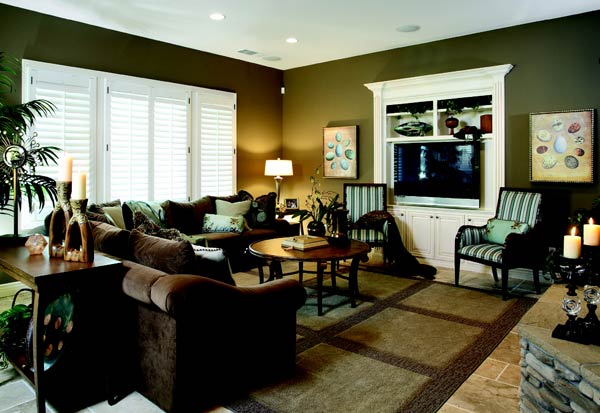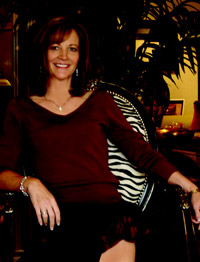
We all want to make our partner happy. We try to compromise on those big decisions such as which car to buy and how to design the interior of our shared abode. But what happens when he wakes up one day and is surrounded with floral bedding, his beloved recliner is missing, and he actually doesn’t like anything about the interior of his own home. Or, she wakes up one day and realizes her dream home looks more like a bachelor pad full of black leather and enough electronics to be a sports bar. The problem begins when one loves European Traditional and the other Contemporary, one a Rustic Lodge feel and the other a Sleek Modern style. These days, the formula can become even more complex when there are multiple generations living in the same home with input into the design process. Fortunately, now more than ever, an eclectic look that has been carefully orchestrated can be not only beautiful and interesting, but uniquely yours.
The key is to keep in mind the goal: A harmonious environment where you both feel at home. A place you can both call a reflection of yourselves. But how do you go about creating a balance between what seems to be opposite ideals. Perhaps the answer is hiring a skilled Interior Designer who can listen carefully to what each of you really want and coming up with neutral ideas that work for both partners.
An experienced interior designer can help resolve complex differences in tastes and style or simple functionality differences such as Susan and Todd’s. Susan wants a cocktail table in the family room because, “that’s what adults have in their family room”, whereas Todd wants a large uninterrupted space of soft carpet in front of the sofa “where the kids and I can wrestle on Saturday morning.” The simple solution of a cocktail ottoman with a tray for drinks and casters on the feet which can easily be rolled away on Saturday mornings may be obvious to a designer but not to Susan and Todd. Of course, many differences are much more complex such as ornate Rococo style versus American Contemporary. Or the very common, “Honey you have good taste, just buy what you want.” which we all know means “Don’t even think about putting pink in the master bedroom.” However, the solution to all of these situations may be the same. A skilled designer can work with both styles to create a refined, creative design that both partners can enjoy. With both experience and education to draw upon, a good Interior Designer can look at each partner’s likes and dislikes to find shared visual elements.

When combining different tastes and styles keep the following in mind:
- Beautiful design is something everyone appreciates. Give the designer creative room to work both styles into the overall look. The end result will be carefully balanced colors, textures and styles versus a randomly chaotic mixture of his taste oddly mixed with hers.
- Selecting classic styles versus trendy furnishings makes for a more successful look. Especially when accessorizing, contemporary can add a freshness and uniqueness to a classic design.
By repeating shapes, defining a common palette of colors, finding continuity in materials, or articulating a cultural theme, the designer can take elements from each person’s taste, belongings, and background and weave them together in a way that visually enables “mine” to become “ours.” - Mixing a splash of bright or bold colors with the muted or darker colors can be pleasing to both tastes. Adding a touch of exotic print on a bench or pillow to an otherwise conservative design instantly upgrades the look.
- Allowing each partner carte blanche to really express him or her self in a “getaway” space such as an office, study, library or sitting room can satisfy the need to make the home his/her own. Especially today, with the main areas of the home melding into one open space, partners can really enjoy their own, out of the way, personal space.
- When there are three people involved, as opposed to two, there’s always a majority point of view, and the designer can play a mediating role.

When selecting your Interior Designer, it is a good idea to pay attention to his or her interpersonal skills as well as their portfolio. Your goal is not just a beautiful home, but a happy home, and what happens en route counts. You don’t want to end up with the showplace you dreamed of but a resentful partner. The combination of both styles will be interesting and complex while feeling unified and well balanced. With a little guidance from a professional interior designer, you can both have the home of your dreams.
